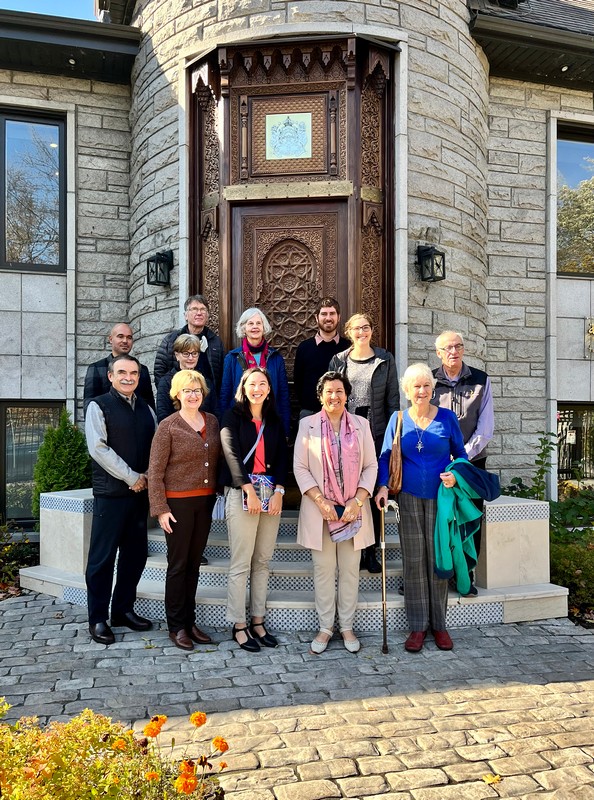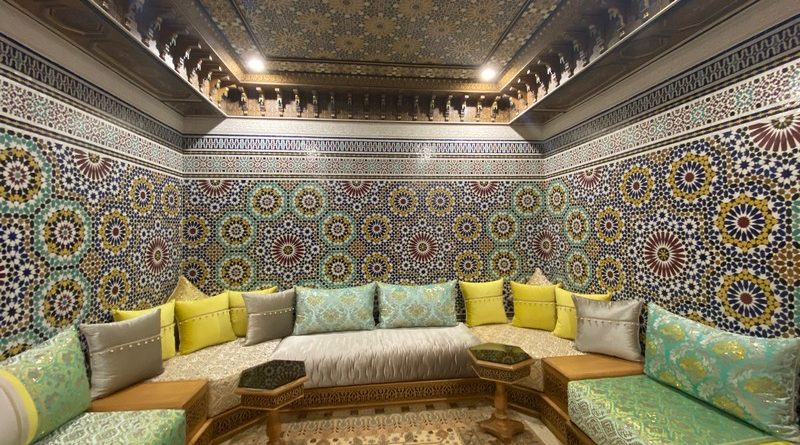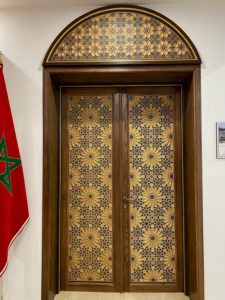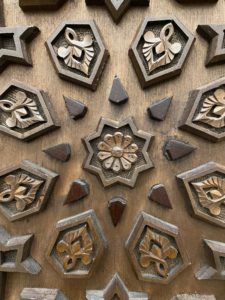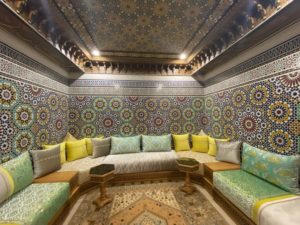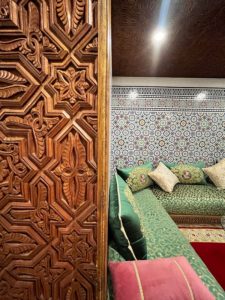A tour of the Moroccan Embassy on Range Road
Hilary Duff
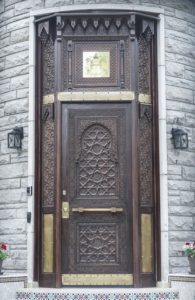
One of the most striking architectural elements in Sandy Hill is the hand-carved oregano pine and cedar wood door of the Embassy of Morocco at 38 Range Rd. Constructed by master carpenters and sculpted by artisans in the Moroccan city of Fes, the door is an impressive entryway into the recently renovated embassy.*
In October, myself, a few Sandy Hill neighbours, and a delegation from Heritage Ottawa were fortunate to receive a tour of the Moroccan Embassy. Our gracious host was Ambassador Souriya Otmani, who was eager to showcase the significant time, care, and investment that have gone into transforming the building. The timing is fitting — 2022 marks 60 years of diplomatic relations between Morocco and Canada.
When the embassy reopened in 2021, construction manager Assad Bouayed described it as a “gallery.” As you can see from the photos, this is an understatement. Though the offices are modern in function, the design of the alcove spaces, boardroom, and ambassador’s office feel like stepping into a peaceful corner of a Moroccan riad.
One trademark of Moroccan design is mosaic tilework called zellige. Individual hand-chiseled tiles fit together to form complex geometric motifs, including radiating star patterns. In the Embassy of Morocco, these zellige tessellations appear in multiple rooms, from the backsplash of the boardroom to the walls of the VIP and driver sitting areas.
The zellige is even more impressive when Bouayed shares how it was assembled. Crouched on the floor, artisans arranged tile after tile like a giant puzzle. Liquid
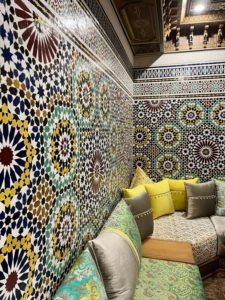
cement was poured over top, left to dry for several days, and then the single heavy slab was hoisted and secured to the wall with more liquid cement.
The hand-carved wood ceiling and wall panels (white and red cedar) are equally hefty, and careful calculations were made to reinforce the structure to support the weight. In the ambassador’s office, brass lanterns and sumptuous green velvet couches complete the ambiance. Though the other offices are less ornate, each boasts a hand-carved wood door, custom made in Fes.
Bouayed — who is himself Moroccan-Canadian — brought over five artisans from Morocco to work on the interior of the embassy. For months, the artisans performed meticulous, intricate work, from installing the marble slab floorway with zellige tiles to the mosaic and wood installations.
“The whole thing was such a reflection of Morocco and I think it’s a huge, huge success,” says Katherine Spencer-Ross, President of Heritage Ottawa and a Sandy Hill resident. “From the front door to the interior, it really is an invitation to come to Morocco.”
From a heritage perspective, Spencer-Ross also applauds the embassy’s decision to renovate the existing building. Constructed in 1950 as a private residence for Ottawa architect Auguste Martineau, the building was purchased by Morocco in 1972. The embassy decided to incorporate Moroccan elements through the door and interior, rather than constructing a new building on the lot that may not have blended as well with the streetscape of Range Road.
Overall, the Moroccan Embassy is absolutely stunning from the moment you enter the front gate. We hope these photos offer a small glimpse, and that we may see it on the list for next year’s Doors Open Ottawa!
*For more information on the exterior door of the Moroccan Embassy see the story from the IMAGE story in the June 2021 here: A glimpse into Morocco’s architectural heritage, right here
